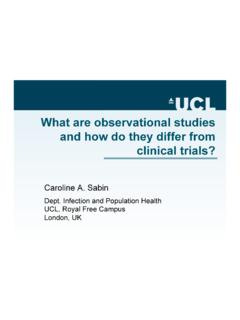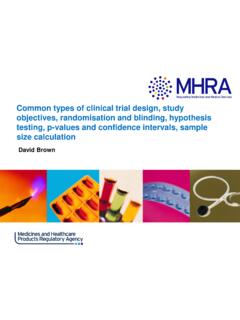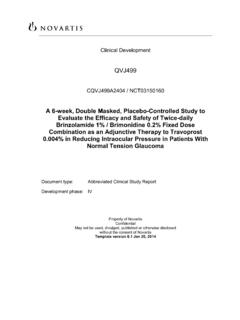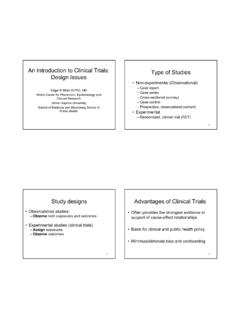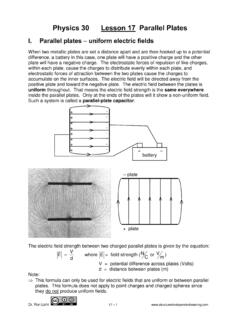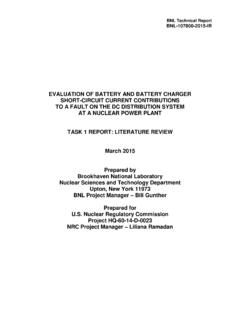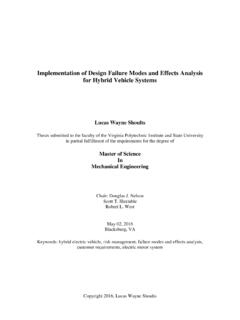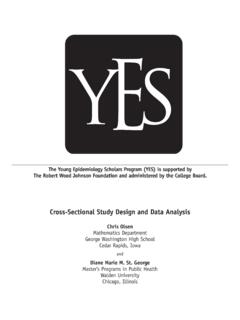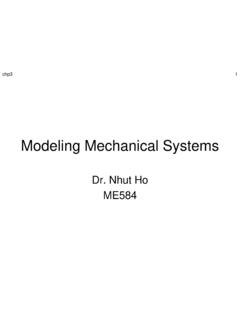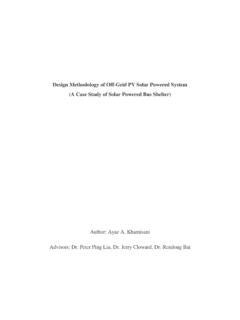Transcription of Session 5: How to critically appraise a paper – an example
1 Session 5: How to critically appraise a paper an example Appraising research broad questions l What is the research question? l Is the study ethical? l Is the study design valid and appropriate? l What are the results? l What are the implications of the findings for clinical practice? Kop van new england artikel Maitland K et al. NEJM (2011); 364:2483-95. Appraising research broad questions l What is the research question? l Is the study ethical? l Is the study design valid and appropriate? l What are the results? l What are the implications of the findings for clinical practice? The research question questions to ask 1. What is the scientific rationale? 2. Is there a pre-defined hypothesis? 3. Where was the study conducted?
2 4. What was the study population? 5. What intervention(s) were compared? 6. What outcomes were considered? The research question questions to ask 1. What is the scientific rationale? The role of fluid resuscitation in the treatment of children with shock and life-threatening infections who live in resource-limited settings is not established. Although the approach is endorsed by pediatric life-support training regarding the criteria for intervention and the volume and type of fluid is lacking. 2. Is there a pre-defined hypothesis? Rapid, early fluid resuscitation will lead to improvements in the outcomes of children with shock. Maitland K et al. NEJM (2011); 364:2483-95. The research question questions to ask 3.
3 Where was the study conducted? Kenya, Tanzania and Uganda 4. What was the study population? Children aged 60 days 12 years of age with shock 5. What intervention(s) were compared? Albumin bolus, saline bolus or no bolus (control) 6. What outcomes were considered? 48-hour mortality; pulmonary edema; increased intracranial pressure; mortality or neurologic sequelae at 4 weeks Maitland K et al. NEJM (2011); 364:2483-95. Appraising research broad questions l What is the research question? l Is the study ethical? l Is the study design valid and appropriate? l What are the results? l What are the implications of the findings for clinical practice? Ethical issues questions to ask 1. Was there a real need to conduct the trial?
4 Was there equipoise when the trial was initiated? 2. Was the study approved by an ethics committee? 3. Did patients (or carers) give informed consent? 4. Was the trial of sufficient size to reach a meaningful conclusion? 5. Was there an independent DSMB? 6. What role did the funder(s) play? Ethical issues informed consent l All patients should give informed consent prior to participating in any RCT l Should be sought before the patient is recruited into the trial and before the result of any randomisation is known l In particular, knowledge of what treatment the patient is to receive should not have any impact on whether s/he is recruited into the trial study power Power of a study - probability of correctly detecting a difference between the arms of a trial when one really exists After carrying out RCT P< Conclude that new regimen is different P> Conclude no difference between regimens New regimen really is different to existing regimen POWER (1- ) Type II error ( )
5 New regimen is no different to existing regimen Type I error ( )` study power l The power of the trial will depend on: - outcome of interest (binary or continuous), - minimum treatment effect felt to be clinically important - threshold for statistical significance (usually ) - size of the trial (small trial = low power) l Small underpowered trials are unethical l Optimal sample size must be calculated at the start of the trial; details of this must be reported in protocol and any manuscripts Ethical issues questions to ask 1. Was there a real need to conduct the trial? Was there equipoise when the trial was initiated? Apparently so. 2. Was the study approved by an ethics committee? Yes - Imperial College (London), Makerere University (Uganda), Medical Research Institute (Kenya) and National Medical Research Institute (Tanzania).
6 3. Did patients (or carers) give informed consent? In cases in which prior written consent from parents and guardians could not be obtained, provision was made for oral assent from a legal surrogate, followed by delayed written informed consent as soon as practicable. Maitland K et al. NEJM (2011); 364:2483-95. Ethical issues questions to ask 4. Was the trial of sufficient size to reach a meaningful conclusion? We estimated that with a sample size of 3600 children, the study would have 80% power to detect a 33% relative reduction in mortality with a saline bolus as compared with the control group and a 40% reduction with an albumin bolus as compared with a saline bolus, assuming a risk of death of 11% in the control group, at a two-sided alpha level of , adjusted for two comparisons with the use of a nominal alpha of Maitland K et al.
7 NEJM (2011); 364:2483-95. Ethical issues questions to ask 5. Was there an independent DSMB? An independent data and safety monitoring committee reviewed the interim analyses from the study twice a year. The Haybittle-Peto criterion was the statistical guide that the committee used in considering a recommendation to stop or modify the 6. What role did the funder(s) play? Neither of those bodies, nor Imperial College, had any role in the design of the study , the collection, analysis, or interpretation of the data, or the writing of the manuscript. Maitland K et al. NEJM (2011); 364:2483-95. Appraising research broad questions l What is the research question? l Is the study ethical? l Is the study design valid and appropriate?
8 L What are the results? l What are the implications of the findings for clinical practice? 1. What is the trial design ? 2. What treatments are being studied? 3. Who is included in the trial? 4. Was randomisation performed? If so, how and could bias have been introduced? 5. Was the study blinded? If not, is the lack of blinding likely to introduce any bias? 6. Were individuals in the different treatment groups treated equally throughout the trial? study design questions to ask Types of RCTs l Superiority trial: demonstrate that one drug is substantially better than another l Equivalence trial: demonstrate that two drugs have the SAME effect (bio-equivalence studies, different formulations of same drug, etc.)
9 L Non-inferiority trial: demonstrate that new drug is not SUBSTANTIALLY WORSE than standard-of-care l Equivalence and non-inferiority trials require emphasis on confidence intervals rather than statistical significance Identifying the study population l study population - the entire group of patients that you would ideally like to study l Rarely feasible to study the population thus, we aim to recruit a sample of patients who are representative of (ie. have similar characteristics to) the population l Inclusion criteria: define the characteristics of patients who will be eligible for the RCT l Exclusion criteria: identify patients who should not be included, usually because they may be placed at harm by participating Allocating treatments to patients l Usually done using randomly generated randomisation lists l These are concealed from investigators to ensure that a patient s treatment allocation is unknown when s/he is invited to participate l After a patient is formally recruited, the list holder ( statistician, pharmacist) will notify the clinician of the treatment that has been allocated l May use sealed opaque envelopes 1.
10 What is the trial design ? Multicenter, parallel , superiority trial with three arms. 2. What treatments are being studied? saline bolus, 5% human albumin bolus, or no bolus (dose dependent on stratum) 3. Who is included in the trial? Children .. between 60 days and 12 years of age and presented with a severe febrile illness complicated by impaired consciousness (prostration or coma), respiratory distress (increased work of breathing), or both, and with impaired study design questions to ask Maitland K et al. NEJM (2011); 364:2483-95. 4. Was randomisation performed? If so, how and could bias have been introduced? Permuted blocks (random sizes) stratified by clinical centre. Trial statistician generated randomization lists; numbers kept in opaque, sealed envelopes, which were opened in numerical order by study clinician.

